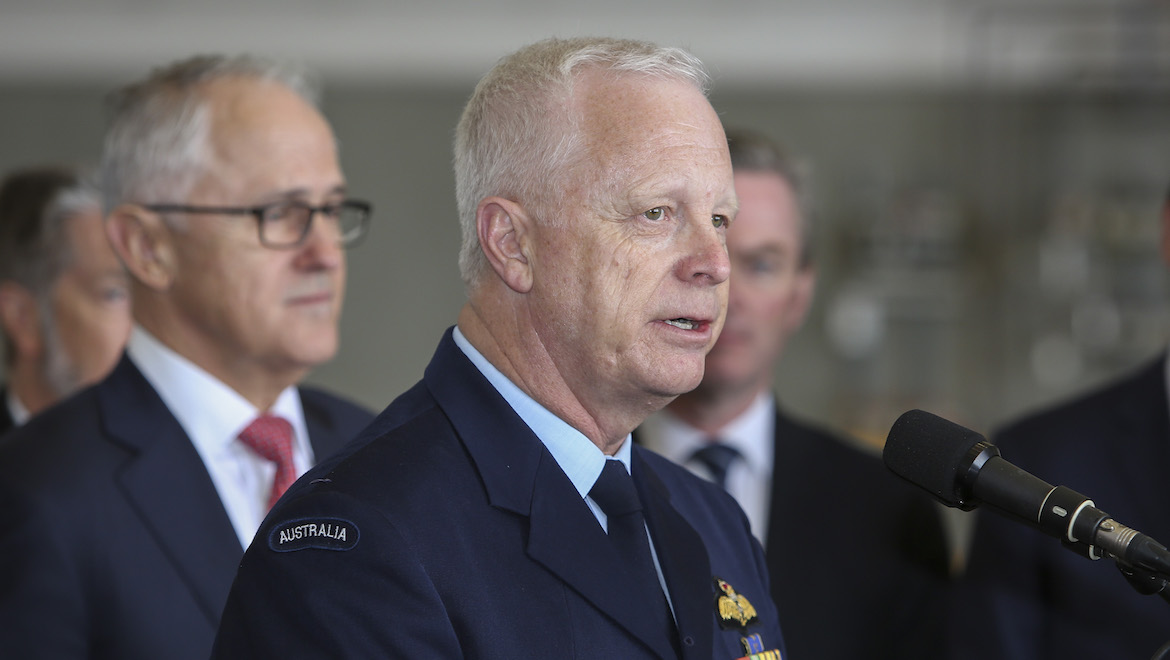
Former Chief of Defence Force Air Chief Marshal Mark Binskin has been appointed deputy chair of Airservices Australia.
Deputy Prime Minister and Minister for Infrastructure, Transport and Regional Development Michael McCormack made the announcement on Friday.
ACM Binskin was Chief of Defence Force from July 2014 until July 2018, when he handed the reins to Australian Army Lieutenant General Angus Campbell and retired from the military after a 40-year career.
He was a Royal Australian Air Force (RAAF) Mirage and Hornet pilot after transferring from the Royal Australian Navy (RAN) following the decommissioning of the RAN’s HMAS Melbourne and its fixed wing air combat fleet in 1982.
In addition to being Chief of Defence Force, during his career ACM Binskin also commanded 77SQN and Air Combat Group, and has held the positions of Air Commander Australia, Chief of Air Force and Vice Chief of Defence Force.
“Air Chief Marshal Binskin brings outstanding governance, aviation and military experience to the Deputy Chair’s role on Airservices’ Board,” McCormack said in a statement.
“An active civil aviation pilot, Air Chief Marshal Binskin also brings considerable leadership experience to his new role, together with in-depth knowledge of major projects, finance and governance, especially with the Australian Defence Force.”
ACM Binskin’s appointment comes three months after another former Chief of Defence Force Sir Angus Houston stepped down in June as Airservices chair after seven years on the board.
It also ensures the board retains a director with military experience at a time where Airservices and Defence continue work on the ambitious OneSKY program.
In February 2018, Airservices, the Department of Defence and Thales signed the final contracts worth $1.2 billion to build OneSKY, which will replace the currently separate civil and Defence air traffic management systems under a single program.
Thales was named as the successful supplier for Onesky at the 2015 Avalon Airshow.
The Airservices corporate plan for 2018/19 said it expected to complete the system design review of the Civil Military Air Traffic Management System (CMATS) by the second quarter of the financial year.
“The program of work for the coming year will focus on finalising the system design review for the core CMATS capability, and commencing work on support facilities (including Air Traffic Service Centres) and enabling capabilities (such as the roll out of new voice communications systems in Perth, Melbourne, Sydney and Brisbane),” the Airservices corporate plan published in August said.
Further, the corporate plan said activities and associated enabling projects for OneSky would be the central focus of Airservices’ capital expenditure over the five years to 2022/23. It said OneSky would account for $724 million, or 59 per cent, of total capital expenditure over the five-year period.
The figure is above the $652 million, or 61 per cent of total spend, in the 2017/18 corporate plan published a year ago.
Sir Angus described Onesky as the “most important development in the safe management of Australia’s skies since the dawn of Australian aviation”.
“Work is well underway, with the benefits being delivered progressively over the roll-out period,” Sir Angus said in the 2018/19 corporate plan.
The corporate plan said the first Defence OneSky tower would be in operation between 2019/20 and 2022/23.
The project, which is running two years late, was placed on Defence’s Projects of Concern list in August 2017.
It was removed from the list in February 2018.
The question of Onesky’s value for money had been highlighted by an Australian National Audit Office (ANAO) report published in April 2017 that suggested Australia could end up paying too much for the project.
Specifically, the ANAO was critical of how the tenders were evaluated.
VIDEO: A look at the OneSky program from Airservices’ YouTube channel.
Government also announces new CASA board member
ACM Binskin was one of two appointments the federal government announced on Friday, with Michael Bridge to join the Civil Aviation Safety Authority (CASA) board.
Bridge was chief executive of Northern Territory-based airline Airnorth for 17 yers before stepping down in 2015. He currently sits on the Airnorth Group board as a director.

He is chairman of the Northern Territory government’s tourism body Tourism NT, a board member of Northern Territory Major Events Company (NTMEC) and a board member of the Regional Aviation Association of Australia (RAAA).
McCormack said Bridge would bring considerable aviation safety, management and corporate governance experience to the CASA board.
“His wealth of aviation safety expertise and operational experience will be valuable to the Board, as particularly given he was a pilot for more than 30 years,” McCormack said.
“Given the completion of the remaining elements of CASA’s regulatory reform program is a key priority, including modernising flight operation regulations, Michael’s appointment is timely.”

















Gary Smith
says:Please correct ACM Binskin’s rank throughout your article. He retired as an ACM not AIRMSHL.